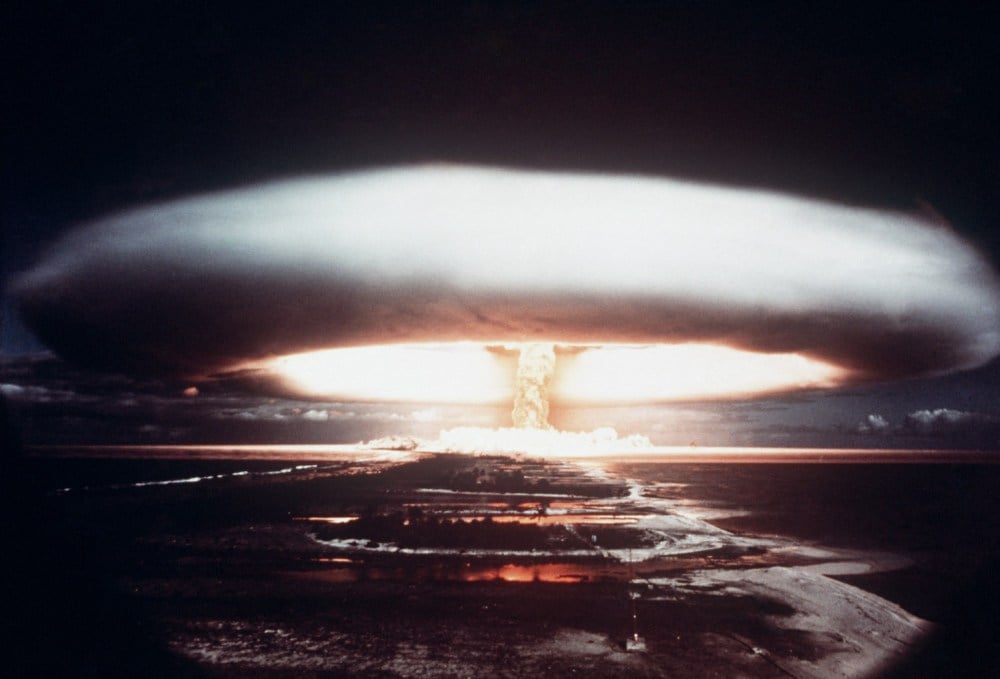U.S. President Donald Trump’s recent social media post—in which he said he had “instructed the Department of War to start testing our Nuclear Weapons on an equal basis” with Russia and China—demands immediate, sober clarification from the White House. Multiple outlets have now reported the news, but the single most dangerous element is not the post itself. It is its ambiguity.
History shows that ambiguity about nuclear intent is destabilizing. A phrase such as “resume nuclear testing” can be interpreted in different ways: a political flourish to show resolve; an order to increase testing of nuclear-capable delivery systems; an instruction to expand simulations and subcritical experiments; or, worst of all, authorization of explosive nuclear warhead detonations.
The first three are serious policy choices that merit debate. The last would mark an epochal reversal of U.S. policy and international norms. Journalists, diplomats, and lawmakers should treat this distinction as urgent and material, not rhetorical. This episode also comes as the last remaining U.S.-Russia arms control treaty, New START, is less than 100 days from expiration, with no successor agreement in sight—further heightening the risks of drift without guardrails.
Why does the difference matter? The United States has observed a voluntary moratorium on explosive nuclear testing since 1992, and it has, thus far, adhered to the object and purpose of to the Comprehensive Nuclear Test Ban Treaty (CTBT) despite not yet ratifying it. The United States has maintained arsenal confidence for decades through science-based stockpile stewardship—using supercomputers, surveillance, and subcritical experiments—rather than new detonations. Resuming explosive testing would not be a quick technical fix; it would require months to years of preparation, explicit budgetary moves, and interagency coordination led by the Department of Energy.
It would also almost certainly provoke reciprocal steps by other nuclear-armed states. The United States, Russia, and China are already modernizing their arsenals in ways that could fuel a three-way nuclear competition if norms erode further—and China, though far behind the other two today, is expanding its arsenal quickly and is the one that likely would benefit the most from resumed testing.
And the risks would not be abstract. Communities in Nevada and across the American West still live with the health consequences of Cold War nuclear testing—elevated cancer rates, contaminated land and water, and lives shortened by radiation exposure. And as Nevada, home to the only authorized U.S. nuclear test site, has experienced explosive population growth since the cessation of U.S. testing, ever more Americans would be in the shadow of a resumption of such testing.
These Americans understand more than anyone that nuclear decisions are never just about strategy and doctrine. They are about human beings and the environment that sustains them. They would rightly demand to know why they should again bear potential radiation risks to solve a problem that our current deterrent posture has already solved. Polls consistently show that Americans oppose a return to explosive testing, which would be a politically costly move for little security gain.
There is also a legal and normative dimension. The United States has limited nuclear testing step-by-step for generations—first by banning atmospheric detonations in the 1963 Partial Test Ban Treaty, then by capping underground tests with the 1974 Threshold Test Ban Treaty—culminating in the aforementioned post-1992 moratorium and support for the CTBT.
Nearly every nation on the planet has signed up to the CTBT, and only North Korea has conducted a nuclear test this century. A U.S. return to detonations would erode decades of American credibility on nonproliferation and hand a strategic gift to those arguing that treaty commitments are optional when tensions rise.
Ambiguity also strains allied confidence—the bedrock of extended nuclear deterrence in Europe and the Asia-Pacific—at a moment when strategic coordination is already under stress in ways that are leading some capitals to contemplate whether they should obtain their own nuclear weapons.
So, what should happen next?
First, the White House must say plainly what “testing” means in this context. If the intent is to increase the frequency or perhaps the profile of U.S. delivery-system tests, then say so—and explain why the current pace is insufficient. If the intent is to expand simulations or subcritical experiments within existing legal frameworks, then explain how the decision differs from explosive testing and what guardrails will apply.
If an explosive detonation is even being considered, then the administration must explain why—and make the technical and legal case to Congress and the public before taking any irreversible steps. Vague rhetorical flourishes are not an acceptable substitute.
Second, Congress should act as a sober brake, not a partisan megaphone. There are lawful channels—budget oversight, hearings, and classified briefings—through which members can rigorously evaluate any proposal’s technical feasibility, cost, and impact on national and global security. Legislators across the aisle should make clear that any attempt to authorize explosive testing without explicit legislative engagement will meet immediate and stiff scrutiny. The governor and congressional delegation of Nevada should be engaged actively in these discussions.
Third, the media must avoid amplifying worst-case interpretations in the absence of evidence. Responsible reporting should distinguish between a rhetorical provocation and a change in military doctrine. The reflex to treat a headline as policy can create the very action-reaction dynamic that fuels arms racing. The responsible course is to report about the post, ask the necessary questions, and wait for clarity before assuming a fundamental shift in U.S. nuclear posture.
Finally, allies and adversaries should be engaged directly. If the United States intends to respond to alleged foreign testing behavior, clear diplomacy is the best way to reduce misperception. Quiet channels can defuse immediate fears while public messaging is clarified. Russian officials have already emphasized that their recent delivery-system tests should not be confused with explosive nuclear tests banned by the CTBT.
A dangerous feature of nuclear politics is the fact that symbolic acts can have material consequences. A roughly worded post, timed and televised, can harden into policy before anyone can walk it back. That is why Congress, the press, and the administration’s own national security professionals must insist on one principle above all: limit ambiguity. If the president meant something other than the resumption of explosive detonations, then say so. If he meant the latter, then start the argument in full daylight—with the technical, fiscal, and legal analysis on the table.
Trump’s nuclear messaging has swung wildly: one day calling for denuclearization diplomacy, the next potentially threatening explosive tests that would accelerate a three-way nuclear arms race. In deterrence, unpredictability is dangerous, not because it frightens adversaries—but because it fractures trust among allies and opens space for miscalculation.
We do not regain strategic stability through reactive one-upmanship. We secure it through clear signals and the painstaking work of diplomacy.
The post Trump’s Vagueness Over Nuclear Testing Could Fuel an Arms Race appeared first on Foreign Policy.




